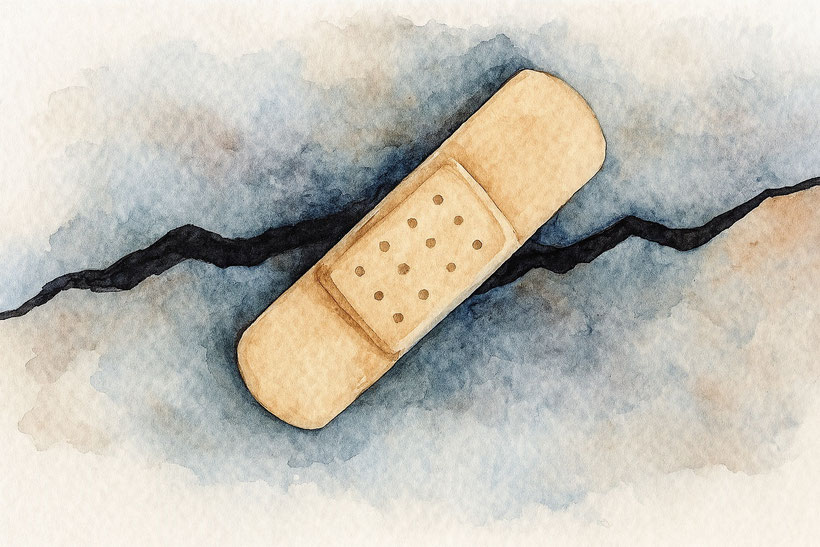𝗪𝗵𝘆 𝗬𝗼𝘂𝗿 𝗣𝗼𝘀𝘁𝘂𝗿𝗲 & 𝗣𝗮𝗶𝗻 𝗣𝗿𝗼𝗯𝗹𝗲𝗺𝘀 𝗮𝗿𝗲 𝗮 𝗧𝗵𝗶𝗻𝗸𝗶𝗻𝗴 𝗣𝗿𝗼𝗯𝗹𝗲𝗺
You’ve felt it for years. That nagging tension in your neck and shoulders. The lower back that aches after a long day at the desk. The thought: "If I could just find the right ergonomic chair, the perfect pillow, or that one magical stretch, it would all be better."
We’ve all been there. In our search for relief, we’re drawn to the promise of a quick fix—the 5-minute solution to a problem that took decades to develop.
It makes perfect sense. When you’re in pain or feeling stuck, you want a solution that works now. But what if your "posture" isn't the real problem? What if the real issue is the process you use to move through your life?
This is the core insight of the Alexander Technique. It’s not a quick fix. It’s a fundamental upgrade to your body’s operating system, your thinking. Movement is thought, an intention.
"97% of people with back pain could benefit by learning the Alexander Technique" - Dr. Jack Stern, spinal neurosurgeon

𝗧𝗵𝗲 "𝗤𝘂𝗶𝗰𝗸 𝗙𝗶𝘅" 𝘃𝘀. 𝗧𝗵𝗲 𝗔𝗹𝗲𝘅𝗮𝗻𝗱𝗲𝗿 𝗧𝗲𝗰𝗵𝗻𝗶𝗾𝘂𝗲
Imagine your body is a sophisticated, self-driving car. A quick fix is like slapping a new coat of paint on it when the engine is making a strange noise. It might look better temporarily, but the underlying problem remains, and will likely get worse.
- The Ergonomic Chair (The "Band-Aid"): It provides support, but it doesn't teach you how to stop collapsing into it. The underlying habit of slumping remains.
- The "Sit Up Straight!" Command (The "Crash Diet"): You tense your muscles, force your shoulders back, and hold your breath. It's unsustainable, exhausting, and often creates new tension elsewhere.
- The Painkiller (The "Credit Card"): It masks the symptom now, but you'll pay the "interest" later, often with compounded issues, because the cause is never addressed.
These approaches are like putting a Band-Aid on a broken arm. They might look like they’re helping, but they’re not doing anything to help the bone—your core movement habits—heal correctly.
𝗧𝗵𝗲 𝗔𝗹𝗲𝘅𝗮𝗻𝗱𝗲𝗿 𝗧𝗲𝗰𝗵𝗻𝗶𝗾𝘂𝗲: 𝗕𝘂𝗶𝗹𝗱𝗶𝗻𝗴 𝗮 𝗙𝗼𝘂𝗻𝗱𝗮𝘁𝗶𝗼𝗻 𝗳𝗼𝗿 𝗮 𝗟𝗶𝗳𝗲𝘁𝗶𝗺𝗲
The Alexander Technique reframes the entire conversation. It’s not about what to do to fix yourself, but about learning how to stop doing the things that are causing the problem in the first place.
It’s not a treatment you receive passively. It’s a skill you learn actively.
This is where we shift from a "quick fix" mindset to a "skill-building" mindset. Instead of giving you a fish, we teach you how to fish.
- It’s About Awareness, Not Just Action: You can’t change a habit you’re not aware of. Most of our postural habits are subconscious. The first step of the Alexander Technique is learning to notice the subtle ways you tighten your neck, hold your breath, or brace yourself for simple actions like sitting down or reaching for a mug. This awareness is the foundation of all change.
- It’s About "Inhibition" – The Power of the Pause: This is a key Alexander term. It doesn't mean suppressing emotions; it means learning to pause before you react. When the phone rings, do you lunge for it with your head leading the charge? When you go to sit, do you collapse downward? "Inhibition" is the powerful skill of stopping your automatic, habitual reaction. In that pause, you create a space for a new, freer choice. Its the ability to say no to the habitual behaviour patterns of movement that may be interfering with your functioning.
- It’s About "Direction" – Guiding Your Movement: Once you’ve paused your habitual reaction, you can then gently guide your body. You learn to send mental directions (intention) for ease and length—"Let my neck be free, to let my head go forward and up, to let my back lengthen and widen." It’s not about forcing a position, but about allowing a more natural, coordinated state.
𝗧𝗵𝗲 𝗖𝗼𝗺𝗽𝗼𝘂𝗻𝗱 𝗜𝗻𝘁𝗲𝗿𝗲𝘀𝘁 𝗼𝗳 𝗮 𝗖𝗼𝗻𝘀𝗶𝘀𝘁𝗲𝗻𝘁 𝗣𝗿𝗮𝗰𝘁𝗶𝗰𝗲
Learning the Alexander Technique is like building the foundation of a house. It takes time and patience to pour the concrete and let it set. But once that solid foundation is in place, you can build anything on it—effortless posture, pain-free movement, greater calm, and improved performance in everything from walking to singing to playing an instrument.
The small, consistent moments of awareness you practice each day—while brushing your teeth, typing an email, or waiting in line—are like making deposits in a health savings account. The compound interest they pay in long-term well-being is enormous.
There's no strength training required. Muscles gain all the strength they need through improved coordination in daily living.
Are You Ready to Trade the Band-Aid for a New Way of Living?
The promise of the Alexander Technique is not a 10-day "transformation". It is the promise of freedom:
- The freedom from constantly thinking about your posture.
- The freedom from relying on gadgets and gizmos to feel okay.
- The freedom that comes from understanding your own body and being in the driver's seat of your own movement.
It’s a journey of self-discovery that replaces the frustration of the quick-fix cycle with the empowerment of a lifelong skill.
If you're ready to stop looking for Band-Aids and start building a foundation, the Alexander Technique is waiting for you.
Write a comment